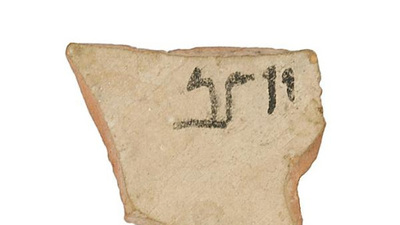Based on a story by Rabbi Nachman of Breslov 1772-1811 (2).
And the Lord said to Moshe: “I will rain down bread (Mannah) for you from the sky … that I may test them, to see whether they follow My Torah or not. (Shemot 16:4.)
The Mannah tasted like any food that one desired. (Yoma 75a)
The Simpleton had learned the trade of a shoemaker. Being simple, he had studied very hard to master it, but he was no expert in the craft. He married and earned a living from his work. But he was simple and so his livelihood was very meager and limited. With only limited skill, he had to work constantly. He didn’t even have time to eat. He would eat as he worked: he’d make a hole with his awl, draw the thick shoemakers’ thread in and out and take a bite of bread and eat it.
Throughout all this, he was always very happy. He was constantly filled with joy. He had every type of food, drink and clothing. He ‘d say to his wife: “My wife give me something to eat.” So she gave him a piece of bread which he would eat. Then he’d say, “Give me some soup with groats.” she ‘d cut him another slice of bread, which he’d eat and praise highly. “How nice and delicious this soup is!” He’d then ask her for some meat and other good food. Each time she would give him a piece of bread. Each time he would savor it and praise the food very highly, saying how well-prepared and delicious it was.
It was as if he were actually eating the food he’d asked for. And in fact when he ate the bread, he really did taste any kind of food he wanted, this was because of his innocence and great happiness.
He would say to his wife, “bring me some beer to drink.” She would bring him some water but he would praise it and say; ”How delicious this beer is!” “Now give me some honey wine.” She would give him water and he would speak most highly of it. “Give me some wine… or other beverages.” And each time she would give him water, but he would enjoy it and praise it as if he were actually drinking what he’d asked for.
The same was true of clothing. Between them, the only overcoat he and his wife had was a sheepskin. Whenever he wanted to go to the market, he would say to his wife, “Give me the sheepskin”, and she would bring it to him. When he wanted to wear a fur coat to go visiting, he’d say, “Give me my fur coat.” She would give him the sheepskin, but he would enjoy it and praise it, saying, “what a nice fur coat this is.” When he needed a caftan to go to the synagogue, he ‘d say, “Give me the caftan.” She gave him the sheepskin and he would praise it: “What a beautiful caftan this is….”
Since he had not completely mastered his trade, when he finished a shoe it was usually triangular in shape, but he would take the shoe in his hand and admire it, deriving the utmost enjoyment from his handiwork. He’d say: “My wife, what a beautiful wonderful shoe this is. How sweet, this shoe is as sweet as honey and sugar.”
Sometimes she’d answer him: “If that is true, how come other shoemakers get three guilders for a pair of shoes while you get only one guilder and a half.” “What do I care about that?” He’d say, “That’s their work and this is my work. Why must we think about others? Let’s think about how much great profit I make on this shoe. The leather costs such and such, the glue and the thread cost such and such …. I have a clear profit of ten groschen! As long as I make such a clear profit, what do I care!” He was thus always filled with joy and happiness.
(1.) This story is based on Sippurei Ma’asiyot by Rabbi Nachman of Breslov, (1815) translated in English as Tales of Rabbi Nachman, by the famous Rabbi Aryeh Kaplan, Breslow Research Institute, Jerusalem, 1985, with an excellent commentary. (1985) pages, 168-173.
(2.) Rabbi Nachman of Breslov was the great-grandson of the ‘founder’ of Chassidism, the famous Rabbi Israel ben Eliezer also called the Ba’al Shem Tov or Besht (1698-1760). Rabbi Nachman’s revolutionary ideas are of great depth and highly unusual. He left behind many works. They include Likutei Moharan, 1806; Sefer haMiddot, 1811, and Sippurei Ma’asiyot, (Tales of Rabbi Nachman), 1815. These tales are of extraordinary complexity, often existing of many layers. Rabbi Nachman was buried in Uman in Ukraine. Like his near contemporary Danish religious philosopher Sören Kierkegaard, he discusses the problem of simple faith and religious doubt. Lately his burial place has become a place of substantial pilgrimage and religious contemplation visited by thousands of his admirers. I have often wondered and lectured on what would have happened if Rabbi Nachman had met famous Dutch apostate Jewish philosopher Baruch Spinoza (1632-1677).




